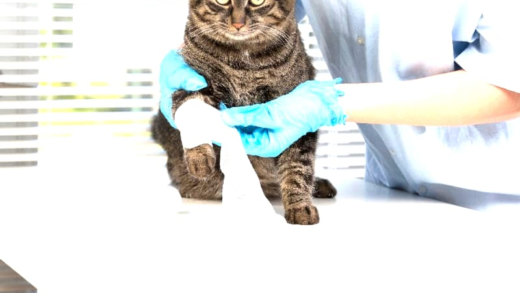This article covers essential information on brake fluid leaks, including signs to watch for, causes, how to check fluid levels, tools for diagnosis, immediate actions to take, and costs associated with repairs. Regular checks and prompt actions are vital for safety.
Signs of a Brake Fluid Leak
Brake fluid leak is a serious issue that can compromise vehicle safety. Recognizing the signs early can prevent costly repairs and dangerous situations. Common signs of a brake fluid leak include:
- Low Brake Fluid Level: If the fluid reservoir is below the minimum level, it indicates a potential leak.
- Warning Light: A dashboard warning light might illuminate, signaling a brake system issue.
- Puddles or Spots: Look for fluid puddles under the vehicle, especially near the wheels.
- Soft Brake Pedal: A spongy or soft brake pedal can indicate a loss of pressure due to leaking fluid.
Immediate attention is crucial if you notice these signs. Ignoring them can lead to brake failure and accidents.
Causes of Brake Fluid Leaks
Understanding the causes of brake fluid leaks helps in prevention and maintenance. Common culprits include:
- Worn Seals: Over time, seals can wear out, leading to fluid escaping from the brake system.
- Damaged Hoses: Brake lines and hoses can become brittle and crack, allowing fluid to leak.
- Corrosion: Rust can develop on metal components, creating weak points for leaks.
- Poor Installation: Incorrectly installed brake components may not seal properly, resulting in leaks.
Regular maintenance can help identify these issues before they lead to significant leaks.
How to Check Brake Fluid Level
Checking your brake fluid level is a straightforward process. Here’s how:
- Locate the brake fluid reservoir, typically found near the back of the engine bay.
- Ensure the engine is off and the vehicle is on a level surface.
- Check the fluid level against the markings on the reservoir. It should be between the “MIN” and “MAX” lines.
- If the level is low, top it up with the recommended brake fluid type.
Regular checks can prevent leaks from becoming more severe.
Tools to Diagnose Brake Fluid Leak
Identifying the source of a brake fluid leak requires specific tools. Essential tools include:
- Brake Fluid Tester: This tool checks fluid condition and moisture content.
- Flashlight: Use it to inspect hard-to-see areas for signs of leakage.
- Torque Wrench: Ensures that components are tightened to the manufacturer’s specifications.
- Rags or Towels: Helpful for cleaning up fluid and checking for leaks.
Using these tools can simplify the diagnosis process and enhance safety.
Immediate Actions Upon Discovering a Brake Fluid Leak
Upon discovering a brake fluid leak, immediate action is critical. A brake fluid leak can lead to brake failure, which poses serious risks on the road. Here’s what you should do:
- Stop Driving: As soon as you suspect a leak, pull over safely and turn off the engine. Continuing to drive can worsen the leak and increase danger.
- Inspect the Area: Look for visible signs of leaking fluid under your vehicle. This can help you determine the severity of the situation.
- Check the Fluid Level: Open the hood and check the brake fluid reservoir. If it’s low, don’t drive the vehicle until it’s fixed.
- Consult a Professional: If you’re not comfortable diagnosing or repairing the issue, contact a mechanic immediately. It’s better to be safe than sorry!
Taking these steps can prevent further damage and ensure your safety.
Can I Fix a Brake Fluid Leak Myself?
Assessing whether to fix a brake fluid leak yourself depends on your comfort level and experience with automotive repairs. Here are some considerations:
- DIY Skills: If you have basic mechanical skills and tools, you might be able to handle minor leaks, like tightening connections or replacing hoses.
- Severity of the Leak: Small leaks can sometimes be fixed with sealants or by replacing small components. However, significant leaks often require professional help.
- Safety First: Remember, brakes are crucial for your safety. If you’re unsure, it’s best to consult a professional.
Ultimately, if the leak is serious or you lack experience, seeking professional help is wise.
Dangers of Driving with a Brake Fluid Leak
Driving with a brake fluid leak is extremely dangerous. Here are the key risks:
- Brake Failure: Low brake fluid can lead to complete brake failure, making it impossible to stop the vehicle effectively.
- Increased Stopping Distance: Even if brakes still function, they may not respond as quickly, increasing the distance needed to stop.
- Potential Accidents: The risk of accidents rises significantly with compromised braking systems. You could endanger yourself and others on the road.
It’s crucial to address any brake fluid leaks promptly to maintain vehicle safety.
How Often to Check Brake Fluid for Leaks
Regularly checking for brake fluid leaks is crucial for vehicle safety. Ideally, you should check the brake fluid level every month, or before embarking on long trips. Here are some guidelines:
- Monthly Checks: Make it a habit to inspect your brake fluid monthly. This helps you catch leaks early and maintain proper fluid levels.
- Before Long Trips: Always check your brake fluid before any long drive. A sudden leak during a journey can lead to severe consequences.
- Post-Service Checks: After any maintenance or repair work involving the brake system, check for leaks to ensure everything is properly sealed.
By following these recommendations, you can ensure your braking system remains effective and safe.
Costs of Fixing a Brake Fluid Leak
The costs associated with fixing a brake fluid leak can vary widely depending on the severity and location of the leak. Here’s a breakdown of potential costs:
- Minor Repairs: For small leaks, such as tightening connections or replacing hoses, costs can range from $50 to $150.
- Moderate Repairs: If you need to replace brake lines or seals, expect to pay between $150 and $300.
- Major Repairs: In cases where extensive work is needed, like replacing the master cylinder, costs can exceed $500.
Always get a quote from a trusted mechanic before proceeding with repairs to avoid unexpected expenses.
Identifying Where the Brake Fluid Leak is Coming From
Pinpointing the source of a brake fluid leak can save time and money. Here are tips to help you identify the leak’s location:
- Visual Inspection: Start with a thorough visual inspection of the brake lines, hoses, and connections for any signs of fluid.
- Look for Puddles: Check underneath your vehicle for fluid puddles, which can indicate the general area of the leak.
- Brake Fluid Smell: A strong smell of brake fluid can help you locate the leak. If you notice this odor, inspect the surrounding areas closely.
Identifying the leak’s source quickly can help you take appropriate action and prevent further damage to your braking system.





Comments are closed.